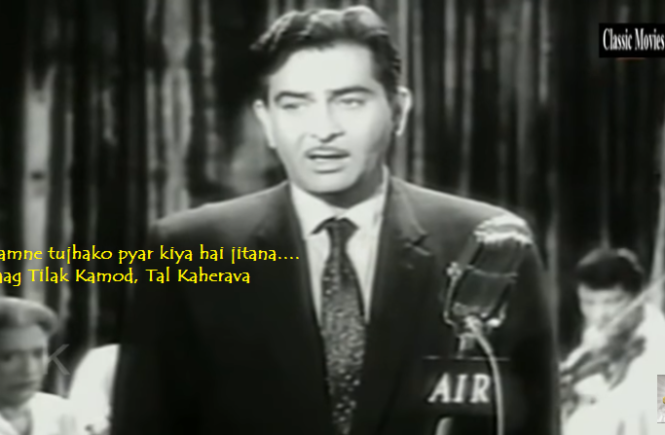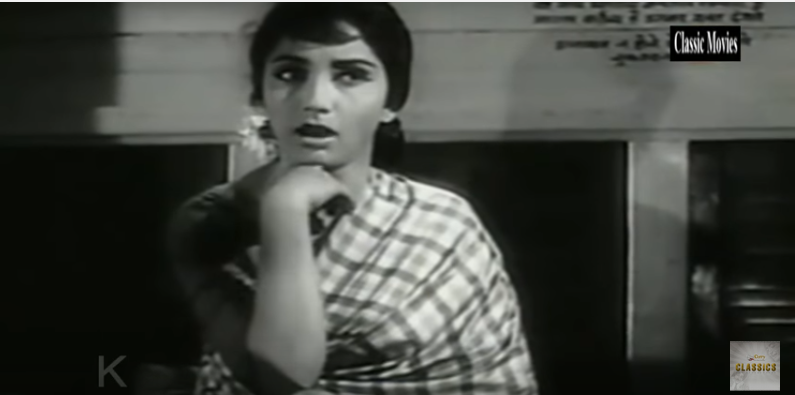Raaga Based Song of the Day: Youn neend se vo jaan-e-chaman jaag uthi hai….
Raag Shyam Kalyan, Tal Dadra
None of you noticed it, but I haven’t given you a proper (melodic) song, so far in Raag Kalyan or any of its variations. I had given you a song in Raag Kalyan earlier on the 14th day (Lagta nahin ahai dil mera ujade dayaar mein) (Please see: ‘Raaga Based Song Of The Day #14‘). However, the entire song was in Alaap and hence didn’t have a Tal. I am going to give you, songs in Raag Kalyan and its variations in the next few days.
Today’s song is in Shyam Kalyan, Tal Dadra.
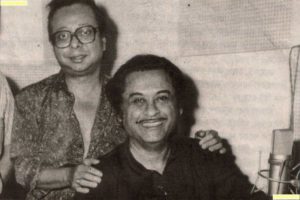 Kishore Kumar has sung some of his best songs composed by Rahul Dev Burman and this is one of them. Some of their best songs are: Tere bina zindagi se koi shikwa to nahin, Chingari koi bhadake, Rimjhim gire sawan, Mere sapno ki rani, Mere naina sawan bhadon, Ye shaam mastani, Kuchh to log kahenge, Sagar kinare, ham dono do premi, and one of my favourites: Tum bin jaayun kahan. It would be correct to say that RD Burman brought out the best in Kishore Kumar.
Kishore Kumar has sung some of his best songs composed by Rahul Dev Burman and this is one of them. Some of their best songs are: Tere bina zindagi se koi shikwa to nahin, Chingari koi bhadake, Rimjhim gire sawan, Mere sapno ki rani, Mere naina sawan bhadon, Ye shaam mastani, Kuchh to log kahenge, Sagar kinare, ham dono do premi, and one of my favourites: Tum bin jaayun kahan. It would be correct to say that RD Burman brought out the best in Kishore Kumar.
We have completed sixty-one days of Raaga Based Songs of the Day. Our first post in the series was titled ‘Raaga Based Song Of The Day #1’ and the song was a Mohammad Rafi and Lata Mangeshkar song from the 1970 Shakti Samanta movie Pagla Kahin Ka: Tum mujhe youn bhula na paoge. It is in Raag Jhinjhoti, Tal Kaherava.
Our sixty-first post or the last post was titled ‘Raaga Based Song Of The Day #61‘ and the song was a Mohammad Rafi song from the 1963 V Shantaram movie Sehra starring Sandhya and Prashant: Taqdeer ka fasaana jaakar kise sunayen. It is in Raag Desh, Tal Dadra.
This blog has a number of posts on Raaga based songs in Hindi movies titled similarly; for example: ‘The Best Raaga Based Songs in Hindi Movies – Raaga Bhimpalasi – Part I‘.
In the last sixty-one days of sharing Raaga based songs of the day, I have given you songs based on Raag Jhinjhoti, Gara, Bhimpalasi, Madhuvanti, Shivaranjani, Bihag, Pahadi, Sarang, Pilu, Bhairavi, Khammaj, Charukesi, Kalyan or Yaman, Desh, Malgunji, Kirwani, Kedar, Bageshri, Megh Malhar, Bhupali, Ahir Bhairav, Malkaush, Mand, Adana, Kafi, Rageshri, Jaunpuri, Tilang, Janasammohini, Chayanat, Shuddha Kalyan, Gaur Sarang, Jogiya, Asavari, Maru Bihag, Durga, Lalit, Puria Dhanashri, Bhinna Sahdja, Sohani, Multani, Patdeep, Jaijaiwanti, Tilak Kamod, Hemant, Basant Mukhari, Gujri Todi, Kalavati, Hamir, Bhatiyar and Gawati. The only five raagas that have been repeated so far are Pahadi, the raaga of my home place in the Himalayas, Maru Bihag, Raag Kirwani, Jhinjhoti and Bhairavi. That makes a total of 51 raagas so far. Today, I am giving you a song in a new raag Shyam Kalyan.
Today, I give you a song sung by Kishore Kumar on the lyrics of Anand Bakshi and on a composition by Rahul Dev Burman. As I said, it is in Raag Shyam Kalyan, Tal Dadra.
However, first, lets take up the value added learning of today. Today, we shall learn about Carnatic Music. Even though the focus of my posts, so far, has been exclusively Hindustani Music, tonight, lets know a little about the other major stream of Indian Classical Music called Carnatic Music.
Carnatic Music is, simply put, the classical music of South India. The pitamah (grandfather) of Carnatic Music has been Purandra Dasa who lived between 1484 and 1564 AD. He was a musicologist from Hampi in Vijayanagara Empire. Indian Classical Music of ancient times was a form of veneration of gods and goddesses. If you recall, from the 15th century onwards until 17th century, we had Bhakti movement in our country. Much of it was focused on singing hymns for gods and goddesses. Please do recall that I have been telling you about the raagas contained in the holy book of the Sikhs: the Sri Guru Granth Sahib. Well, Purandra Dasa was also a devotee of Lord Krishna. In his part of India, he systematized classical Indian music theory and developed exercises for musicians to learn and perfect their art. He travelled widely sharing and teaching his ideas, and influenced numerous South Indian and Maharashtra Bhakti movement musicians. These exercises, his teachings about raaga, and his systematic methodology called Suladi Sapta Tala (literally, “primordial seven talas”) remains in use in contemporary times. The efforts of Purandara Dasa in the 16th century began the Carnatic style of Indian classical music and hence a clear demarcation emerged between Hindustani Music and Carnatic Music. The former, as I have laboured to tell you at very early stage, was heavily influenced by Persia and the fusion of Sanskrit/Hindi music created in Moghul Courts. The latter stayed clear of such influences.
Carnatic music, from South India, tends to be more rhythmically intensive and structured than Hindustani music. Examples of this are the logical classification of raagas into melakarthas, and the use of fixed compositions similar to Western classical music. Carnatic raaga elaborations are generally much faster in tempo and shorter than their equivalents in Hindustani music. In addition, accompanists have a much larger role in Carnatic concerts than in Hindustani concerts. Today’s typical concert structure was put in place by the vocalist Ariyakudi Ramanuja Iyengar. The opening piece is called a varnam, and is a warm-up for the musicians. A devotion and a request for a blessing follows, then a series of interchanges between ragams (unmetered melody) and thaalams (the ornamentation, equivalent to the jor). This is intermixed with hymns called krithis. The pallavi or theme from the raga then follows. Carnatic pieces also have notated lyrical poems that are reproduced as such, possibly with embellishments and treatments according to the performer’s ideology.
Primary themes include worship, descriptions of temples, philosophy, and nayaka-nayika (Sanskrit “hero-heroine”) themes. Tyagaraja (1759–1847), Muthuswami Dikshitar (1776–1827) and Syama Sastri (1762–1827) have been the important historic scholars of Carnatic music. According to Eleanor Zelliot, Tyagaraja is known in the Carnatic tradition as one of the greatest composers, and he reverentially acknowledged the influence of Purandara Dasa.
Carnatic music was mainly patronized by the local kings of the Kingdom of Mysore and Kingdom of Travancore in the 18th through 20th centuries. Some of the royalty of the kingdoms of Mysore and Travancore were themselves noted composers and proficient in playing musical instruments, such as the veena, rudra veena, violin, ghatam, flute, mridangam, nagaswara and swarabhat.
The main emphasis in Carnatic music is on vocal music; most compositions are written to be sung, and even when played on instruments, they are meant to be performed in a singing style (known as gāyaki).
As I mentioned, today’s song is composed in Raag Shyam Kalyan, Tal Dadra.
Raag Shyam Kalyan belongs to Kalyan Thaat. Its Jati is Audhav-Sampurna Vakra, that is five notes in Aaroha (minus Gandharva and Dhaivat) and all seven notes in Avaroha but twisted. It is sung during the first prahar of the night, that is, between 6 to 9 PM. This Raag is a very melodious and considered a mixture of Kalyan ang and Kamod ang (G m P G m R S). Raag Shuddh Sarang and Shyam Kalyan have some similarity; although the former doesn’t include Ga. The concluding phrase – G m R S helps to maintain the impression of Shyam Kalyan. Although this phrase also occurs in Raag Kamod, dominance of sharp Ma and Ni in Shyam Kalyan gives it a distinct character.
Two of the songs composed in raag Shyam Kalyan are: Ye sham ki tanhayiyan aise mein tera gham (1953 Aah) and Tu mere saath rahega munne (1978 Trishul).
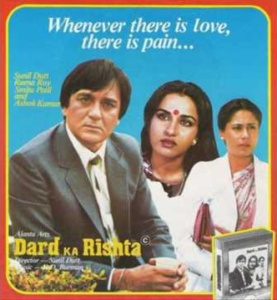 The song Youn neend se vo jaan-e-chaman jaag uthi hai is from the 1978 Sunil Dutt movie Dard Ka Rishta that starred, besides him, Reena Roy, Smita Patil and Ashok Kumar.
The song Youn neend se vo jaan-e-chaman jaag uthi hai is from the 1978 Sunil Dutt movie Dard Ka Rishta that starred, besides him, Reena Roy, Smita Patil and Ashok Kumar.
The song was penned by Anand Bakshi and composed by RD Burman. It was sung by Kishore Kumar. As you listen to the song, I am sure, you are bound to marvel at the excellence of lyrics by Anand Bakshi and composition by RD Burman. And that’s the time you’d say what an excellent song, though not so well known.
Please enjoy in Raag Shyam Kalyan, Tal Dadra: Youn neend se vo jaan-e-chaman jaag uthi hai….
Yuu.N nii.nd se vo jaan-e-chaman jaag uThii hai
Pardes mai.n phir yaad-e-vatan jaag uThii hai
Yuu.N nii.nda se vo jaan-e-chaman…
Phir yaad hame.n aaye hai.n saavan ke vo jhuule
Vo bhuul gaye hamako, unhe.n ham nahii.n bhuule
Unhe ham nahii.n bhuule
Is dard ke kaa.nTo.n kii chubhan jaag uThii hai
Pardes me.n phira yaad-e-vatan, jaag uThii hai
Ham log sayaane sahii, diivAne hai.n lekin
Begaane bahut achchhe hai.n, begaane hai.n lekin
Begaane hai.n lekin
Begaano me.n apano.n kii lagan, jaag uThii hai
Parades me.n phir yaad-e-vatan jaag uThii hai
Is shahar se thaa achchhaa bahut apanaa vo gaa.Nv
PanaghaT hai yahaa.N koii naa piipal kii vo chhaa.Nv
Pashchim me.n vo puurab kii pavan jaag uThii hai
Pardes me.n phir yaad-e-vatan jaag uThii hai
Yuu.N nii.nda se vo jaan-e-chamana…
We have intended to learn about Raaga based music whilst we entertain ourselves with Raaga based songs. So, lets, once again, take stock of our collective learning so far:
- On the first day we learnt about the Raaga system devised by Pandit Vishnu Narayan Bhatkhande, which is the prevalent system in Hindustani Classical Music and based on ten Thaats.
- On the second day we learnt about Tal or Taal.
- On the third day we learnt about characteristics of Raagas that included Swar, Jati, Thaat, Arohana and Avarohana, Vadi, Samvadi and Pakad.
- On the fourth day, we learnt about Sargam.
- On the fifth day, we learnt about notations used in Indian classical music or simply Swar Lipi.
- On the sixth day, we learnt about the Ras (sentiments) that Raagas evoke.
- On the seventh day, we learnt about various types of Swar: Shuddha, Achal, Vikrut, Komal and Teevra.
- On the eighth day, we learnt the parts of a composition in Indian Classical Music.
- On the ninth day, we learnt the names of some of the popular instruments used in Indian Classical Music.
- On the tenth day, we learnt about the sources of names of Raagas.
- On the eleventh day, we learnt about why Bhairavi is the first raag to be taught to beginners and also why it is the last in a performance.
- On the twelfth day, we learnt about Khammaj Thaat.
- On the thirteenth day, we learnt about Tal Punjabi Theka or Sitarkhani.
- On the fourteenth day, we learnt about Alap.
- On the fifteenth day, we learnt about List of Raagas (Raagmala) in my favourite book: Sri Guru Granth Sahib.
- On the sixteenth day, we learnt about tips for raaga identification.
- On the seventeenth day, we learnt the basics of Gharana system.
- On the eighteenth day, we learnt about Filmi Sangeet.
- On the nineteenth day, we learnt about the commonest Tal in Raagas: Tintal.
- On the twentieth day, we learnt about the Kafi Thaat.
- On the twenty-first day, we learnt a little more in detail about the classification of Raagas.
- On the twenty-second day, we learnt the essential differences between Bhairavi and Bhairav.
- On the twenty-third day, we learnt a little more in detail about the Jati or Jaati of a raaga.
- On the twenty-fourth day, we learnt details of Thaat Bilawal, the most basic thaat in the Bhatkhande’s system of raagas.
- On the twenty-fifth day, we learnt about Tintal.
- On the twenty-sixth day, we learnt in detail about the Raaga – Samay linkage.
- On the twenty-seventh day, we learnt about Lehar.
- On the twenty-eighth day, we learnt about the history of the Hindustani Music.
- On the twenty-ninth day, we learnt about Dhrupad.
- On the thirtieth day, we learnt about Rupaktal that I was introduced to, a few months back, by my friend Anand Desai.
- On the thirty-first day, we learnt about Khayal.
- On the thirty-second day, we learnt about Thumri.
- On the thirty-third day, we learnt about Tappa.
- On the thirty-fourth day, we learnt about Tarana.
- On the thirty-fifth day, we learnt about Tal Dipchandi (Moghali).
- On the thirty-sixth day, we learnt about Tabla.
- On the thirty-seventh day, we learnt about Kirtan.
- On the thirty-eighth day, we learnt about Pakhawaj.
- On the thirty-ninth day, we learnt about Hori.
- On the fortieth day, we learnt about Dadra.
- On the forty-first day, we learnt about Kajri.
- On the forty-second day, we learnt about Chaiti.
- On the forty-third day, we learnt about Sarangi.
- On the forty-fourth day, we learnt about Shehnai.
- On the forty-fifth day, we learnt about Sarod.
- On the forty-sixth day, we learnt about Bansuri.
- On the forty-seventh day, we learnt about Ektal and Tanpura.
- On the forty-eighth day, we learnt about Veena.
- On the forty-ninth day, we repeated our learning of Veena with a small excitement added.
- On the fiftieth day, we learnt about Dilruba/Esraj.
- On the fifty-first day, we learnt about Jaltarang.
- On the fifty-second day we learnt about Qawwali.
- On the fifty-third day, we learnt about Sitar.
- On the fifty-fourth day, we learnt about Surbahar.
- On the fifty-fifth day, we learnt about Harmonium.
- On the fifty-sixth day, we learnt about Santoor.
- On the fifty-seventh day, we learnt about Swarmandal.
- On the fifty-eighth day, we learnt about the Shruti Box.
- On the fifty-ninth day, we learnt about Alankar.
- On the sixtieth day, we learnt about singing in Aakaar.
- On the sixty-first day, we learnt about the Classification of Indian Musical Instruments.
- And today, on the sixty-second day, we learnt a little about Carnatic Music.
There is much more still to be learnt and enjoyed.
Please stay tuned!
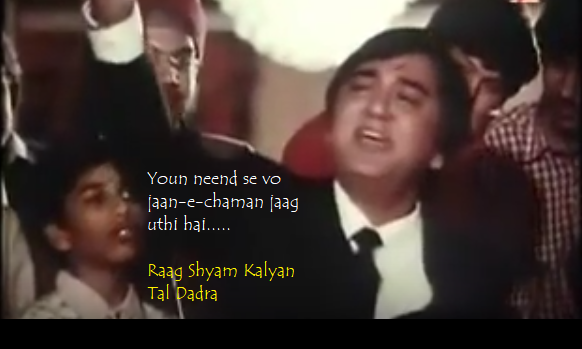
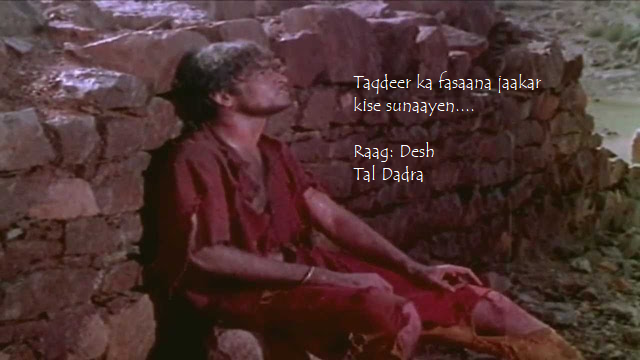
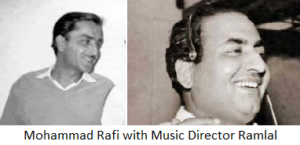 It is also signature Mohammad Rafi with his passion, outstanding voice and ability to go to high pitch with ease. Everytime I return to Mohammad Rafi, I keep thinking that there was and is no one with his calibre of singing. He was the one for whom we can use the word incomparable, doing it full justice. This one is with a forgotten music director Ramlal who gave us remarkably beautiful songs in this movie Sehra as well as in Geet Gaya Pathron Ne (both V Shantaram movies); songs such as: Tum to pyaar ho sajani, Pankh hote to udd aati, Ja ja ja re tujhe ham jaan gaye, Tere khayaalon mein ham, and Mandve tale gareeb ke do phool khil rahe hain.
It is also signature Mohammad Rafi with his passion, outstanding voice and ability to go to high pitch with ease. Everytime I return to Mohammad Rafi, I keep thinking that there was and is no one with his calibre of singing. He was the one for whom we can use the word incomparable, doing it full justice. This one is with a forgotten music director Ramlal who gave us remarkably beautiful songs in this movie Sehra as well as in Geet Gaya Pathron Ne (both V Shantaram movies); songs such as: Tum to pyaar ho sajani, Pankh hote to udd aati, Ja ja ja re tujhe ham jaan gaye, Tere khayaalon mein ham, and Mandve tale gareeb ke do phool khil rahe hain.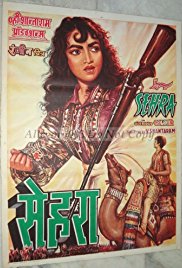
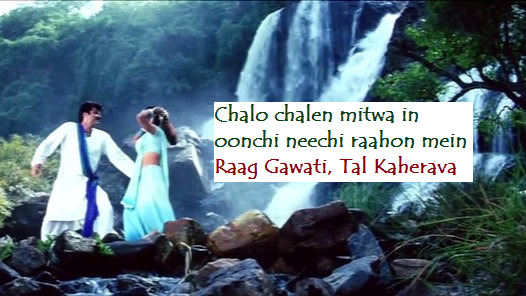
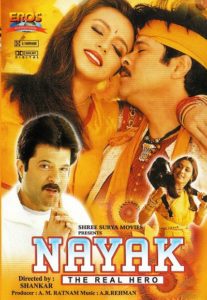
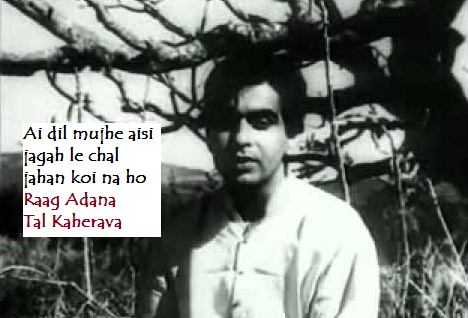

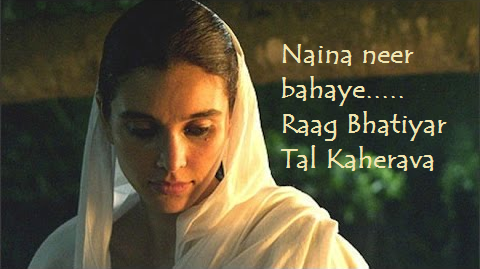
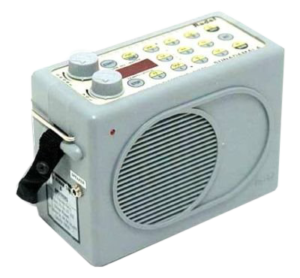
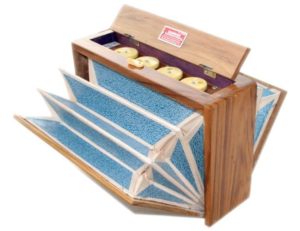
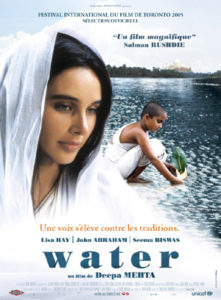

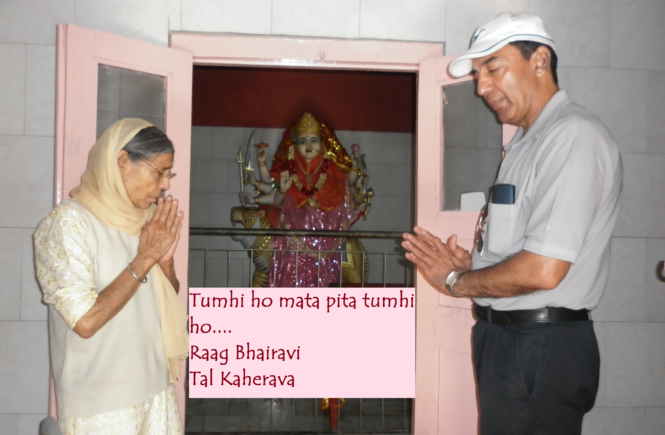
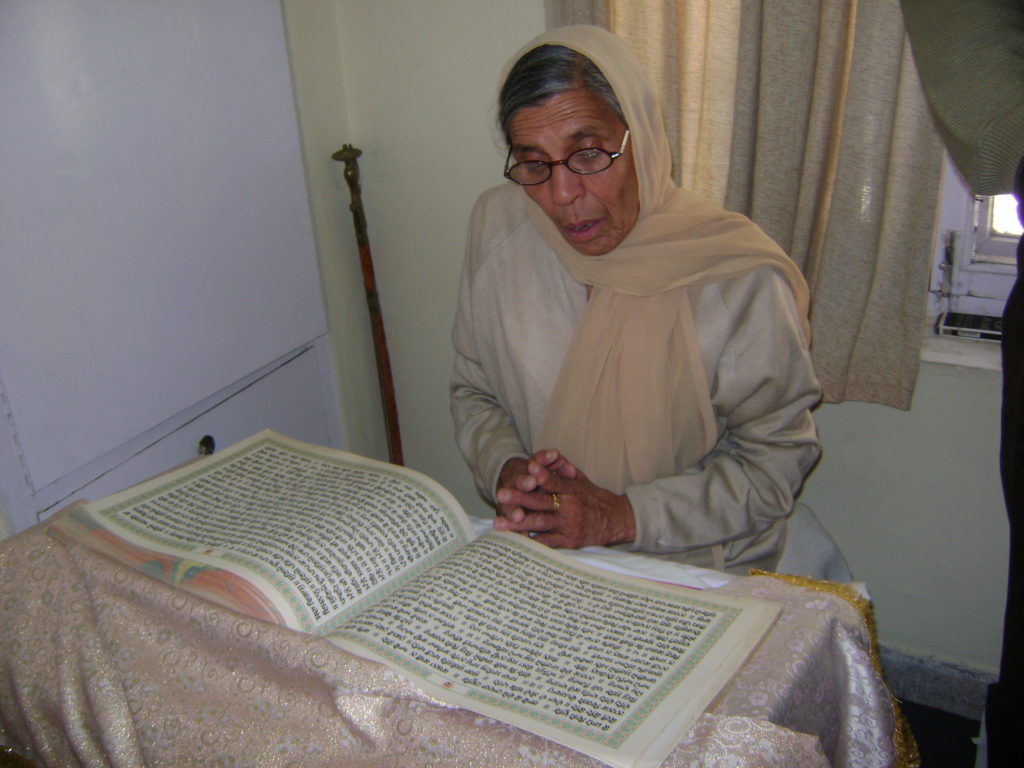
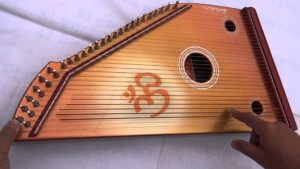
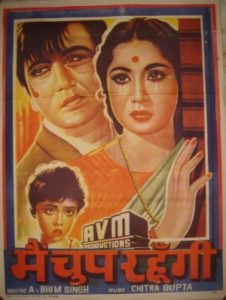 Once again, I have made use of the song in memory of my late mother. The song, originally, is from the
Once again, I have made use of the song in memory of my late mother. The song, originally, is from the 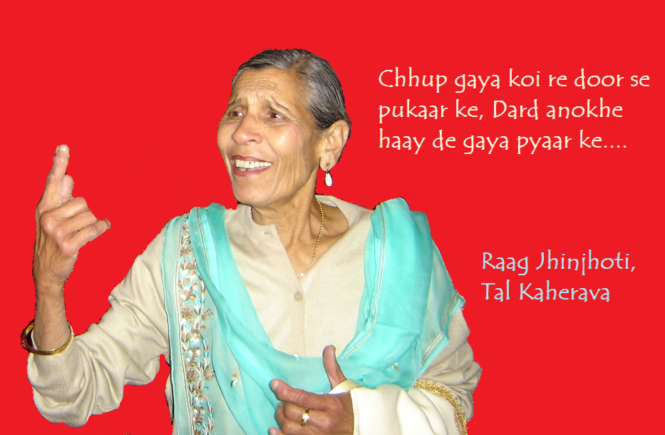
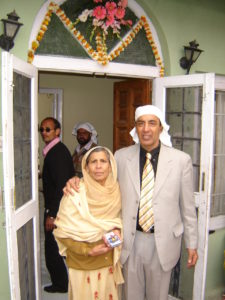 Whilst this is a great song, no doubt, I am sure this is the first time someone would have made use of the song to remember his late mother. Now, why did I do it? There are several reasons. The first one is that the lyrics (don’t forget I am a
Whilst this is a great song, no doubt, I am sure this is the first time someone would have made use of the song to remember his late mother. Now, why did I do it? There are several reasons. The first one is that the lyrics (don’t forget I am a 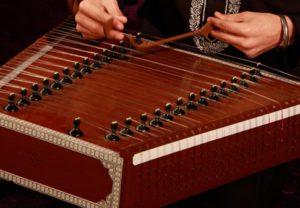
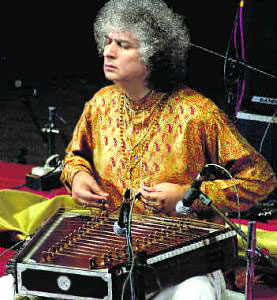
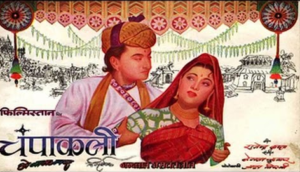 Of course, I have made use of the song in memory of my late mother. The song, originally, is from the
Of course, I have made use of the song in memory of my late mother. The song, originally, is from the 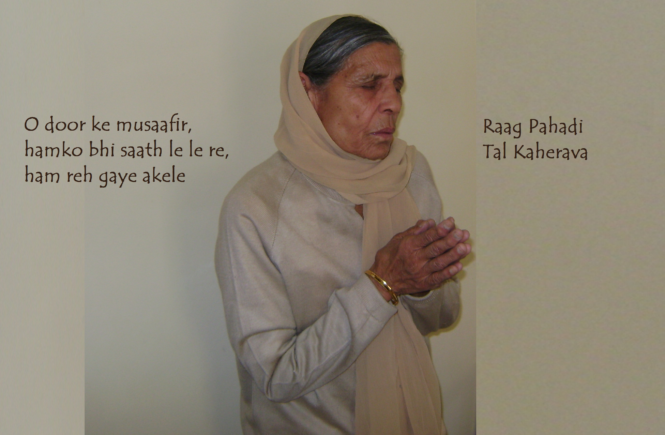
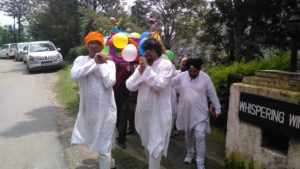 My redicovery of him included learning about his abiding interest in old Hindi movies and songs. After the Antim Ardaas, on the night of 20th/21st Aug, we sat together to listen to songs and ghazals of Shakeel Badayuni. JP brought out that he had done eight years research on Shakeel’s song in Mughal-e-Azam that resulted in his most widely read piece on the song
My redicovery of him included learning about his abiding interest in old Hindi movies and songs. After the Antim Ardaas, on the night of 20th/21st Aug, we sat together to listen to songs and ghazals of Shakeel Badayuni. JP brought out that he had done eight years research on Shakeel’s song in Mughal-e-Azam that resulted in his most widely read piece on the song 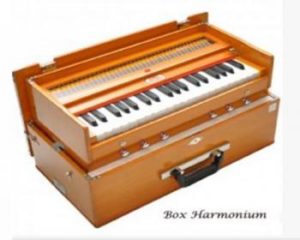 Harmonium is a popular insterument in many forms of Indian music. Although developed in the West (Christian Gottlieb Kratzenstein (1723–1795), professor of physiology at Copenhagen, was credited with the first free-reed instrument made in the Western world), Harmonium, the way it was developed in the Indian sub-continet, became a unique instrument with its drone stops and scale changing mechanism. It also became hand-held after Dwarkanath Ghose of Dwarkin company modified the Western and cumbersome harmony flute that was pedal pumped. Indeed, in many Indian movies, harmonium used to be played with hands and hung around the neck (eg, in the 1956 Raj Khosla movie C.I.D.’s song ‘Leke pehla pehla pyaar’.
Harmonium is a popular insterument in many forms of Indian music. Although developed in the West (Christian Gottlieb Kratzenstein (1723–1795), professor of physiology at Copenhagen, was credited with the first free-reed instrument made in the Western world), Harmonium, the way it was developed in the Indian sub-continet, became a unique instrument with its drone stops and scale changing mechanism. It also became hand-held after Dwarkanath Ghose of Dwarkin company modified the Western and cumbersome harmony flute that was pedal pumped. Indeed, in many Indian movies, harmonium used to be played with hands and hung around the neck (eg, in the 1956 Raj Khosla movie C.I.D.’s song ‘Leke pehla pehla pyaar’.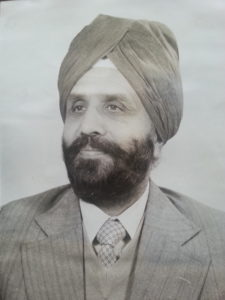 Today, of course, I take recourse to being
Today, of course, I take recourse to being 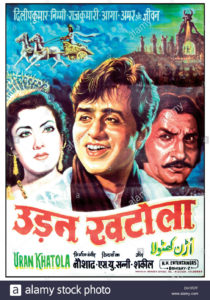 I am the one who has taken this song in the memory of and sadness for my mother. Originally, it was sung by
I am the one who has taken this song in the memory of and sadness for my mother. Originally, it was sung by 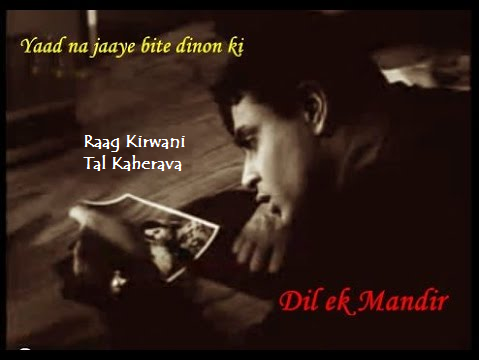
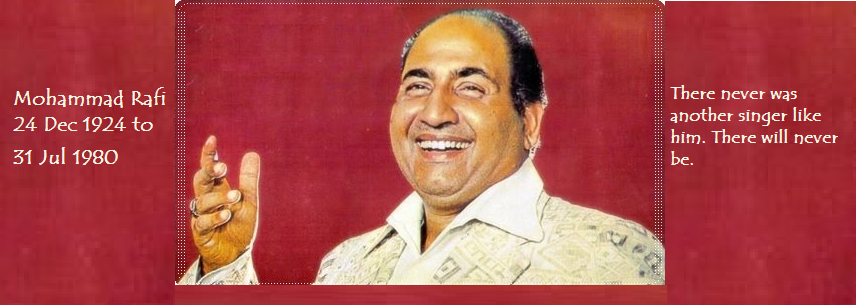
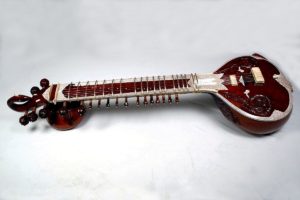
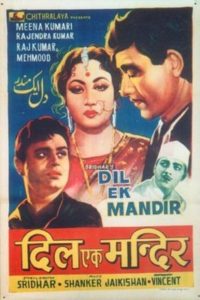
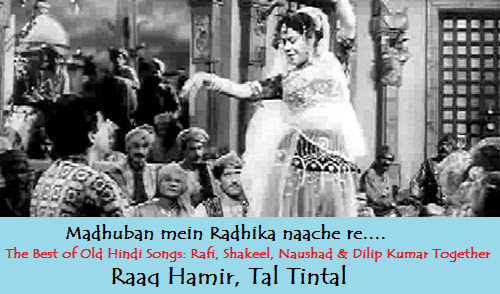
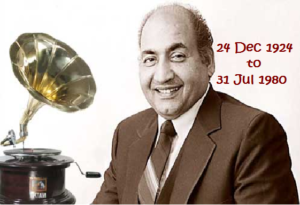 Tomorrow is the death anniversary of the greatest Indian playback singer: Mohammad Rafi (Please read: ‘
Tomorrow is the death anniversary of the greatest Indian playback singer: Mohammad Rafi (Please read: ‘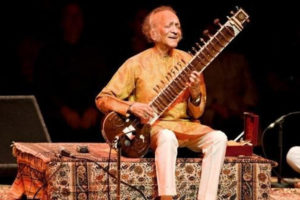 Sitar
Sitar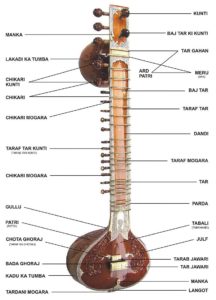 Typically
Typically 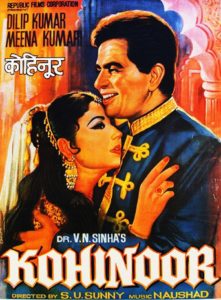 Today’s song (qawwali) is from the
Today’s song (qawwali) is from the 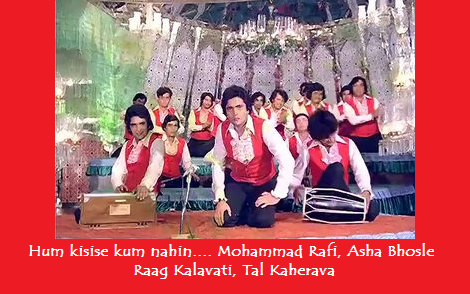
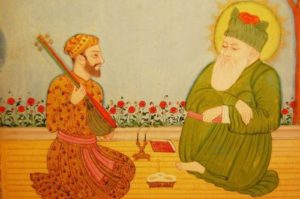
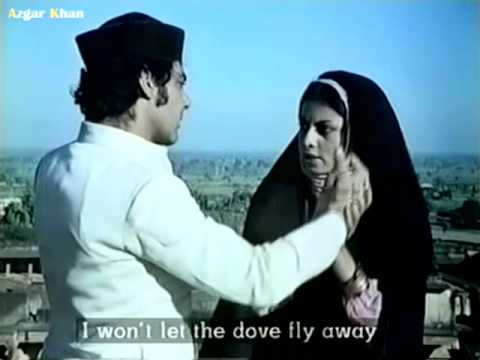
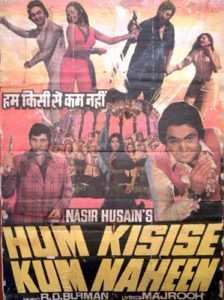
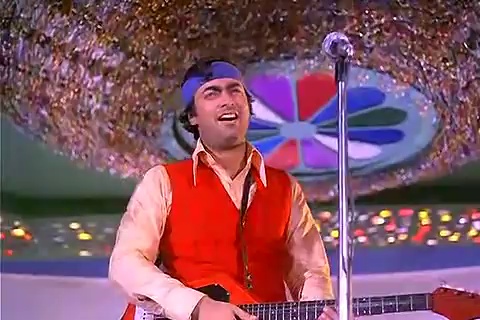
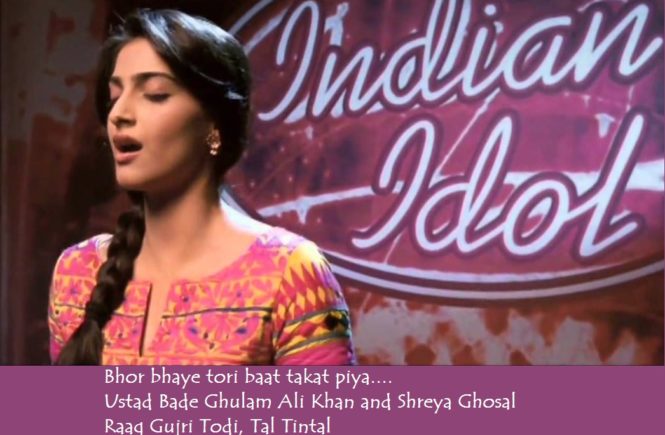
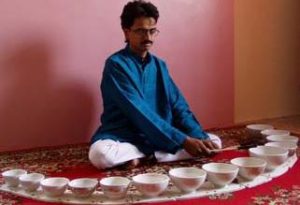
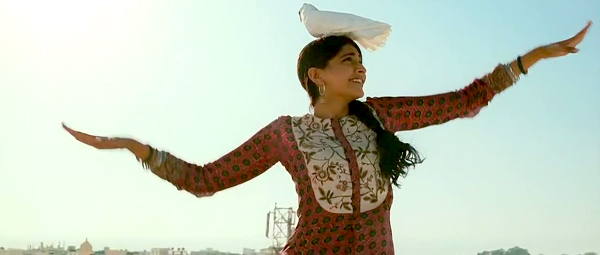
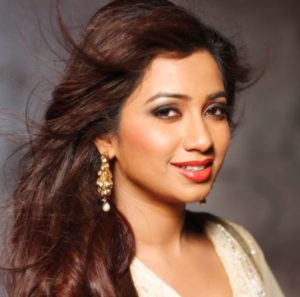
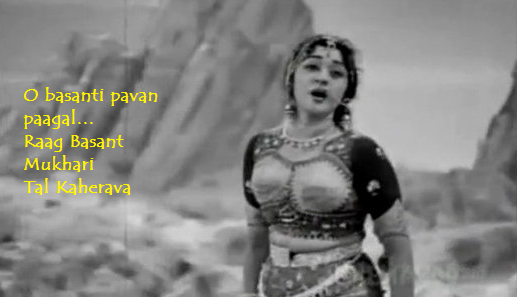
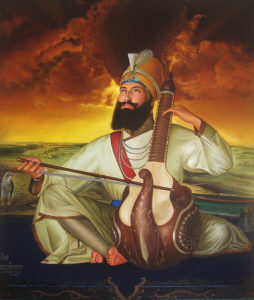
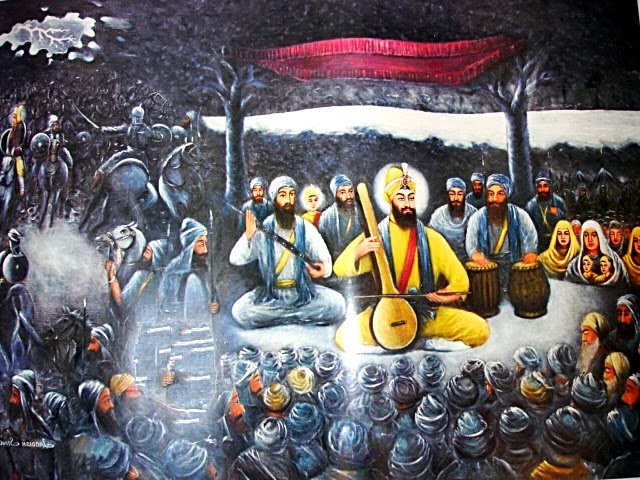
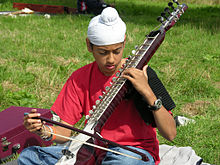
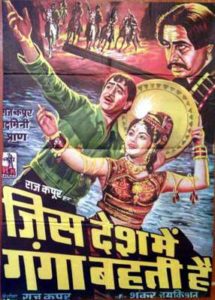 Today’s song is from the
Today’s song is from the 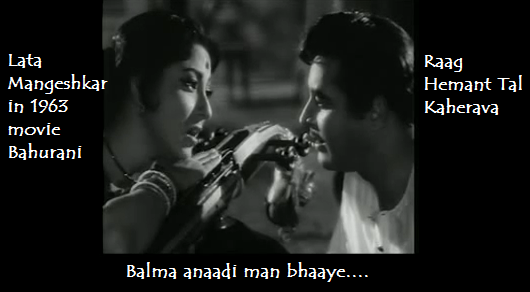
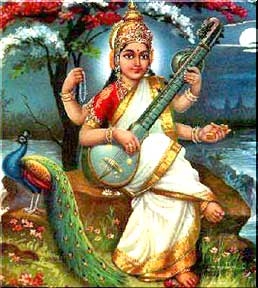
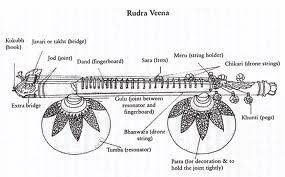 The construction of Veena varies between the Hindustani music and Carnatic Music.
The construction of Veena varies between the Hindustani music and Carnatic Music. 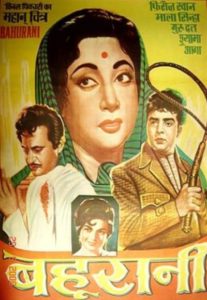 Today’s song is from the
Today’s song is from the 